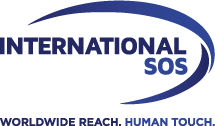At International SOS we publish a wealth of advice and guidance for our clients, the public, and other healthcare professionals. This section provides links to research and articles that have been developed by, or in partnership with, our International SOS experts.
MEDICAL RESEARCH
-
Behaviorial Health Morbidity for those studying or working abroad

This exploratory Duty of Care study demonstrates how there are differences between students studying abroad and employees working abroad: students are more likely than international assignees to be diagnosed with behavioural health issues, to be referred to a health provider (rather than being treated through in-patient care), and to be evacuated or repatriated.
-
Medical requests for assistance from globally mobile populations

The requests for assistance from international assignees from different sectors: corporate, government and non-governmental organisations are compared. The findings of this study indicate that there are differing implications to consider when managing Duty of Care. It also highlights the necessity of providing support for international assignees and their dependents.
-
Gender as a Determinant of Health in HIA

Gender is a major determinant of health. Francesca Viliani investigates the different dimensions of gender and how failing to address it explicitly through the Health Impact Assessment process may result in an appraisal that fails to appropriately judge how the project will affect community health.
-
Comparison of rapid diagnostic test Plasmotec Malaria-3, microscopy, and quantitative real-time PCR

The study tests the reliability of the Rapid Diagnostic Test (RDT) on two species of Malaria. The results found that despite it being used in Indonesia as a point-of-care tool, its negative ratio for P-vivax indicates that the RDT lacked sufficient discriminating exclusion power; falling below general acceptance criteria.
-
Cardiovascular Diseases Risk Analysis of One Natural Gas Pipeline Company Employees in Year 2013

This study uses the results from a health check programme to analyse and predict the cardiovascular disease risks of one natural gas pipeline company. The cardiovascular diseases risk factors of the employees are found to be high, which indicates the importance of continuing the annual health check programme. This article is in Chinese.
-
Non-communicable disease risk factor patterns among mining industry workers in Papua, Indonesia

The South-East Asia region are projected to see the highest increase in non-communicable diseases (NCD). This study examines how mining industry employees are exposed to various factors that elevates their NCD risk. Assessment is over a 5 year duration with results showing risk indicators were high and increased significantly from baseline through 5-year follow-up.
-
Trends in silicosis prevalence and the healthy worker effect among gold miners in South Africa

Silicosis is a form of occupational lung disease due to exposure to silica dust. This large study conducted in a population of working Southern African gold miners finds a flat or even declining trend in silicosis prevalence in contrast to autopsy data that shows a rising trend. This provides important evidence for large scale efforts underway on the subcontinent to combat tuberculosis and silicosis (two diseases closely associated). It is one of the few studies that examines empirically the ‘healthy worker effect’.
-
Salt Reduction Initiatives around the World A Systematic Review of Progress

A review of progress towards the global target to reduce salt intake by 30% by 2015. The review shows how there is a large and increasing number of countries that have salt reduction strategies in place. The absence of a consistent approach to implementation highlights uncertainty about the elements most important to success.
-
The Return on Investment: Saving Lives and Saving Costs

The study discusses how companies can save if a pre-travel screening is implemented. By developing screening programs that link destination risk with an individual’s health risks, companies can avert unwarranted hospitalisations, medical evacuations and failed assignments.
-
Rheumatic heart disease among adults in a mining community of Papua, Indonesia

This study suggests that there may be a role for expanding echocardiography screening in occupational settings. Tailored interventions targeting high risk groups, such as older employees may be especially important in alleviating the rheumatic heart disease burden. By taking an occupational health approach, this study opens up a new avenue for controlling this disease.
-
Health Risks and Travel Preparation during the 2008 Beijing Olympic and Paralympic Games

This article documents the surveillance of illnesses among travellers at six Beijing clinics during the 2008 Olympic and Paralympic Games. The findings from a survey (with 807 respondents) show the necessity to continuously disseminate information to healthcare providers who advise travellers.
-
Yaws study a success

The article highlights our sponsorship into the study of the eradication of Yaws. Arnaud Vaissié comments on the positive impact it can make on local communities; the research funding model, demonstrates how foreign companies can contribute to improving the health and well-being of people at a local level.
-
The Global Availability of Rabies Immune Globulin and Rabies Vaccine in Clinics

This report assesses the global availability of the rabies vaccine (RV) and rabies immune globulin (RIG) to travellers with the conclusion aimed to improve recommendations for travellers worldwide. It details the method used; sending out a 20-question survey, with results showing that RIG and RV might not be readily available at a traveller’s destination. Medical evacuation insurance therefore should be considered prior to departure.
MEDICAL ADVICE
-
Keeping Your Globally Mobile Employees Healthy, Safe and Secure

Dr Myles Druckman describes five key processes that will help companies perform Duty of Care and minimise risks to the employee and company alike; the elements of a best-practice international pre-assignment health programme to ensure assignees are fit for work in locations with high medical risk; and the five responsibilities of globally mobile employees for protecting their health.
-
Expecting the Unexpected – Knowing Who and How to Ask for Help

Knowing what to do in an emergency can be difficult in the best of circumstances – but for employees who have transferred recently for work and are unfamiliar with their surroundings, the complexities can be a lot harder. Dr Robert Quigley offers several scenarios affecting an organisation’s human capital and provides guidance for seeking assistance as well as how to develop emergency planning and support systems.
AEROMEDICAL EVACUATION
-
Country Factors Associated With the Risk of Hospitalisation and Aeromedical Evacuation

To assess two country risk rating tools, this study analyses data from 2009-2010 that includes aeromedical evacuations and hospitalisations – as well as data from 2009 that focuses on aeromedical evacuations and hospitalisations specifically of, at-risk expatriates. As the tools strongly associate hospitalisation and aeromedical evacuation with country risk category – employers can use them as indicators of risk to build prevention programmes.
-
International Aeromedical Evacuation

This article reasons how the benefits of international aeromedical evacuation of those with infectious diseases exceed the risk. The portable medical isolation unit is mentioned as well as the transportation of patients with suspected SARS and pulmonary tuberculosis.
-
Successful trans-Atlantic Air Ambulance Transfer

The case report details the medical condition and successful transfer of a patient (UK to US), who was supported by a biventricular assist device via a fixed-winged aircraft. Dr Ryan Copeland and Dr Robert Quigley formed part of the operational and medical team that supported the oversight and execution of this high-risk transport. The case is documented as the practice of transporting patients on mechanical cardiovascular support is uncommon.
-
On-Site Implantation of a Ventricular Assist Device to Facilitate Aeromedical Transport

The case report details the transportation of cardiovascular experts from Florida to Panama to implant a left ventricular assist device in a patient suffering from cardiogenic shock. The report details the mechanical/pharmacological support that stabilises the patient for air transportation back to the US. It overall draws on both the challenges and logistics involved with the planning, resuscitation and aeromedical transport.









